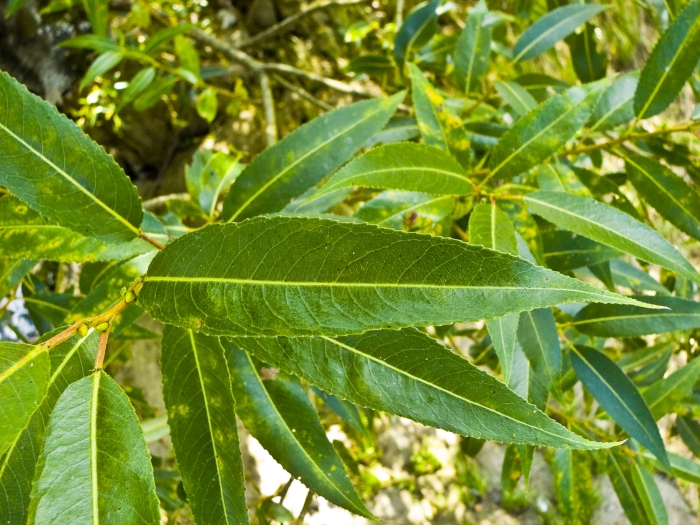Crack Willow
(Salix ×fragilis)
Crack Willow (Salix ×fragilis)
/
/

Willow
CC BY 2.5
Image By:
Willow
Recorded By:
Copyright:
CC BY 2.5
Copyright Notice:
Photo by: Willow | License Type: CC BY 2.5 | License URL: https://creativecommons.org/licenses/by/2.5 | Uploader: Willow | Publisher: Wikimedia Commons | Title: Salix_fragilis_001.jpg | Notes: User created page with UploadWizard |













































Estimated Native Range
Summary
Salix ×fragilis, commonly known as Crack Willow, is a deciduous tree native to Europe and Western Asia. It is commonly found along rivers, streams, and in wetlands, where it plays a crucial role in stabilizing riverbanks and providing habitat for wildlife. The tree typically grows to a height of 40-60 feet (12-18 meters) and a width of 35-50 feet (11-15 meters), with a broad, irregular crown. The Crack Willow is named for its brittle branches that easily snap off, a characteristic that aids in its propagation along waterways.
Crack Willow is valued for its rapid growth and ability to thrive in wet conditions, making it suitable for erosion control and riparian plantings. It produces slender, yellow catkins in early spring that are modestly showy. This species is often used in urban areas for its tolerance of air pollution and its adaptability to various soil types, although it is not recommended for small gardens due to its large size and potential for aggressive root growth. It requires full sun to part shade, consistent moisture, and can tolerate a range of soil conditions, including those with poor drainage. However, it is susceptible to several diseases, including willow scab and black canker, and its brittle wood can be a liability during storms.CC BY-SA 4.0
Crack Willow is valued for its rapid growth and ability to thrive in wet conditions, making it suitable for erosion control and riparian plantings. It produces slender, yellow catkins in early spring that are modestly showy. This species is often used in urban areas for its tolerance of air pollution and its adaptability to various soil types, although it is not recommended for small gardens due to its large size and potential for aggressive root growth. It requires full sun to part shade, consistent moisture, and can tolerate a range of soil conditions, including those with poor drainage. However, it is susceptible to several diseases, including willow scab and black canker, and its brittle wood can be a liability during storms.CC BY-SA 4.0
Plant Description
- Plant Type: Tree
- Height: 40-60 feet
- Width: 35-50 feet
- Growth Rate: Rapid
- Flower Color: Green, Cream, Yellow
- Flowering Season: Summer
- Leaf Retention: Deciduous
Growth Requirements
- Sun: Full Sun
- Water: High, Medium
- Drainage: Fast, Medium
Common Uses
Bank Stabilization, Bee Garden, Bird Garden, Butterfly Garden, Deer Resistant, Erosion Control, Hummingbird Garden
Natural Habitat
Native to Europe and Western Asia, commonly found along rivers, streams, and in wetlands
Other Names
Common Names: Brittle Willow, Hybrid Crack Willow, Hybrid White Willow, Grøn Pil, Bruch-Weide, Knackweide, Fahl-Weide, Hohe Weide, Kujasalava, Saule Fragile
Scientific Names: , Salix ×fragilis, Salix ×rubens, Salix alba x fragilis, Salix fragilis var. fragilis, Salix alba × euxina, Salix neotricha, Salix viridis, Salix xrubens, Salix fragilis subsp. fragilis
GBIF Accepted Name: Salix ×fragilis L.